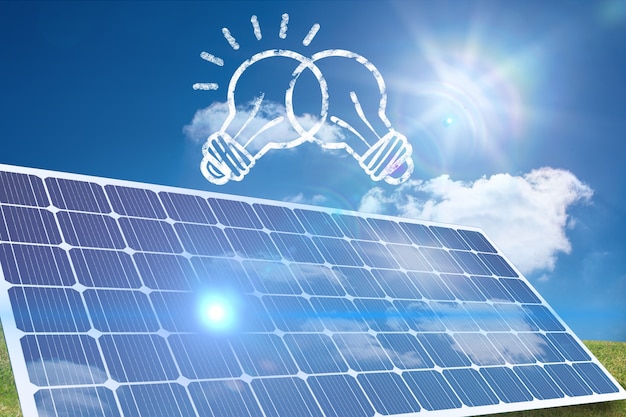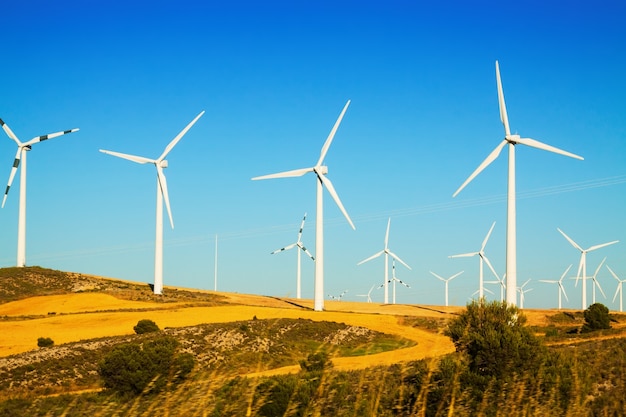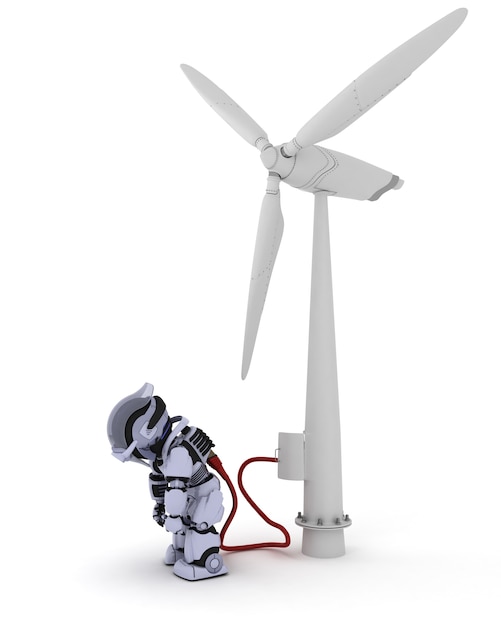![Energy Market and 6 Types of Renewable Energy [Infographic]](https://www.sitepronews.com/wp-content/uploads/2021/02/storetech-1-618x3626.png)
Renewable energy is energy from the earth’s natural resources that are not finite or exhaustible (wind and sunlight). Renewable energy is an alternative to traditional energy that relies on fossil fuels and is not harmful to the environment. (eco-friendly)
Energy Market and Types of Renewable Energy
6 Types of Renewable Energy
- Solar
Solar energy is energy from sunlight and converting it into heat, electricity, or hot water. Photovoltaic (PV) systems can convert direct sunlight into electricity through the use of solar cells.

Benefits of Solar Energy
One of the benefits of solar energy is that sunlight is endless. There is a limitless supply of solar energy. Relying on solar energy rather than fossil fuels also helps us improve public health and environmental conditions.
Solar energy could also eliminate energy costs, and reduce your energy bills. Many countries help the investment in solar energy by providing rebates or tax credits.
- Wind
Wind farms capture the energy of wind flow by using turbines and converting it into electricity. There are many systems to convert wind energy.

Commercial-grade wind-powered generating systems can power many different organizations. Single-wind turbines are used to help supplement pre-existing energy organizations.
Another form is utility-scale wind farms, which are purchased by contract or wholesale.
Benefits of Wind Energy
Wind energy is a clean energy source, which means that it doesn’t pollute the air like other forms of energy. Wind energy doesn’t produce carbon dioxide or release any harmful products that can cause environmental degradation or negatively affect human health like smog, acid rain, etc.
Investment in wind energy technology can also open up new avenues for jobs and job training, as the turbines on farms need to be serviced and maintained to keep running.

- Hydroelectric
Dams are what people most associate with when it comes to hydroelectric power. Water flows through the dam’s turbines to produce electricity, known as pumped-storage hydropower. Run-of-river hydropower uses a channel to funnel water through rather than powering it through a dam.
Benefits of Hydroelectric Energy
Hydroelectric power is very versatile and can be generated using both large-scale projects (like the Hoover Dam) and small-scale projects like underwater turbines and lower dams on small rivers and streams.
Hydroelectric power does not generate pollution, and therefore is a much more environmentally-friendly energy option for our environment.

- Geothermal
Geothermal heat is heat that is trapped beneath the earth’s crust from the formation of the Earth 4.5 billion years ago and radioactive decay. Sometimes large amounts of this heat escape naturally, but all at once, resulting in familiar occurrences, such as volcanic eruptions and geysers.
This heat can be captured and used to produce geothermal energy by using steam that comes from the heated water pumping below the surface, which then rises to the top and can be used to operate a turbine.
Benefits of Geothermal Energy

Geothermal energy is not as common as other types of renewable energy sources, but it has a significant potential for energy supply. Since it can be built underground, it leaves very little footprint on the land.
- Hydrogen
Hydrogen needs to be combined with other elements, such as oxygen to make water as it does not occur naturally as a gas on its own. When hydrogen is separated from another element it can be used for both fuel and electricity.
Benefits of Hydrogen Energy

Hydrogen can be used as a clean-burning fuel, which leads to less pollution and a cleaner environment. It can also be used for fuel cells which are similar to batteries and can be used for powering an electric motor.
- Biomass
Bioenergy is renewable energy derived from biomass. Biomass is organic matter that comes from recently living plants and organisms. Using wood in your fireplace is an example of biomass that most people are familiar with.
There are various methods used to generate energy through the use of biomass. This can be done by burning biomass or harnessing methane gas which is produced by the natural decomposition of organic materials in ponds or even landfills.

Benefits of Biomass Energy
The use of biomass in energy production creates carbon dioxide that is put into the air, but the regeneration of plants consumes the same amount of carbon dioxide, which is said to create a balanced atmosphere.
Biomass can be used in many different ways in our daily lives, not only for personal use but for businesses as well. In 2017, energy from biomass made up about 5% of the total energy used in the U.S.
These days people can improve the environment with greener energy solutions (Renewable Energy). If you’re a homeowner, you can install solar panels in your home.

Solar panels not only reduce your energy costs but help improve your standard of living with a safer, more eco-friendlier energy choice that doesn’t depend on resources that harm the environment.
There are also alternatives for a greener way of life offered by your electric companies.
More Details https://justenergy.com